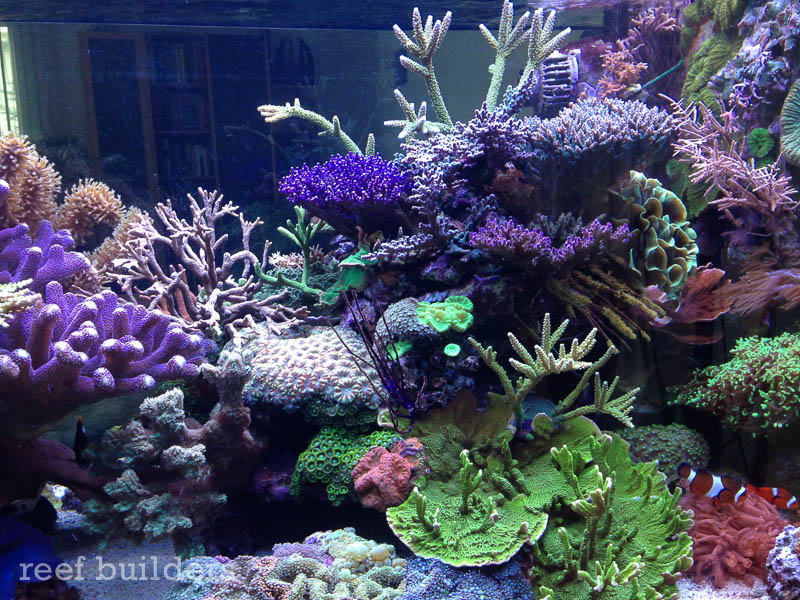Recently, I visited Glenn Fong (GlennF on the interwebs) who keeps a number of reef- and marine tanks in his home. Glenn is a full-blooded hobbyist, I counted nearly ten aquaria in his living room, including a system in which he breeds seahorses, numerous frag tanks, a breeder tank for Aiptasia eating Berghia nudibranches and some tanks which he says are just there because space allows it.
Centerpiece of this small underwater-zoo is his large reef tank containing about 400 gallons. Following his build thread on one of the Dutch forums, I have seen this tank developing from a nice reef tank into a gorgeous reef with a splendor of variety. After following the more conventional routes of reef keeping, Glenn felt there was still room for improvement.
[singlepic id=10740 w= h= float=none]
Based on lots of self study, he felt that he needed to have more control over the essential water parameters. Using conventional test kits and chemical calculations he developed a method he calls Dutch Synthetic Reefing or just DSR. Glenn’s large reef is purely ran on this method. While I was skeptical when I first heard about his method, it cannot be denied his tank does very well on it.
Based on the results with his own tanks, Glenn felt he could help other aquarists out with it. Numerous tanks which somehow did not run too well have been drastically improved with the use of Glenn’s method. Originally, the method was just a tool for him to run his own tanks. When he started helping others, he received so many inquiries about availability, he decided he should offer this method to anyone interested as to help others having the same degree of success he has with his own reef.
[singlepic id=10737 w= h= float=none]
Many of us are already familiar with controlling a few essential parameters such as calcium and carbonate using two- or three part methods. Glenn has taken this approach a little wider and offers control over 11 parameters. Hobbyists fill in the results they measured with their test kits in this excel-sheet and the sheet gives feedback on these results and informs how to correct them if necessary.
Glenn states no ionic misbalance will occur when his method is used correctly. The method does not only top up used elements, it also offers control over phosphates and nitrates (many DSR-users notice they even have to dose these!), cyanos and algae. Starting with the method is really easy and so is quitting: apart from the test kits and the salts and solutions, no new equipment has to be bought.
How do you feel about this method?



